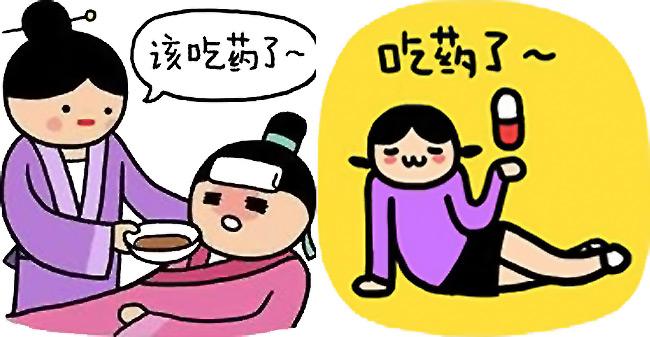医学文献的翻译极具严谨性、客观性,语言的规范性和准确性,医学翻译具有鲜明的特点,对翻译人员的要求较高,翻译人员除了掌握扎实的英语语言基础和医学专业知识以外,还必须熟悉翻译理论和技巧。

Drug Action
The following terms describe the action and interaction of drugs in the body after they have been absorbed into the bloodstream:
Additive Action. The combination of two similar drugs is equal to the sum of the effects of each. For example, if drug A gives 10 per cent tumor kill as a chemotherapeutic agent and drug B gives 20 per cent tumor kill, using A and B together would give 30 per cent tumor kill.
Cumulative Action. After administration of certain drugs, concentrations of the drug or its toxic effect on tissue may increase with each dose. The drug dose may have to be reduced to prevent accumulation to toxic concentrations.
Idiosyncrasy. This is any unexpected effect that may appear in the patient following administration of a drug. Idiosyncratic reactions are produced in very few patients but may be life- threatening in those few instances. For example, in some individuals penicillin is known to cause an idiosyncratic reaction such as anaphylaxis (acute type of hypersensitivity, including asthma and shock).
Synergism (Potentiation). A combination of two drugs can sometimes cause an effect that is greater than the sum of the individual effects of each drug given alone. For example, penicillin and streptomycin, two antibiotic drugs, are given together in treatment for bacterial endocarditis because of their synergistic effect. Tolerance. The effects of a given dose diminish as treatment goes on, and larger doses must be given to maintain the desired effect. Tolerance is a feature of addiction to drugs such as morphine and merperdine hydrochloride (Demerol).
药物的作用
当药物摄入或施用于体内时,它们会被血流或机体组织所吸收。然后药物与机体细胞分子结合或将改变,从而改变细胞的工作方式。药物作用指的是:药物是如何在体内引起这些变化的。下面这些术语描述药物被吸收进入血流后在体内产生的作用和药物的相互作用。
相加作用:两种相似药物的合用,其效果等于两种药的药效之和。例如,如果化疗药A有10%的肿瘤杀伤力,而化疗药B有20%的肿瘤杀伤力,合用A和B就会有30%的肿瘤杀伤力。
累积作用:服用某种药物后,这种药物的浓度或毒效会随每次用药而增加。必须减少药的剂量以防止积累成有毒溶度。
特异反应:这是病人服药后出现的一种意外反应。特异反应仅出现在极少数的病人身上,尽管是极少数,但出现了就可能会威胁生命。例如,在某些人身上,青霉素可引起如过敏性(急性过敏症包括哮喘、休克)一类的特异反应,这已广为人知。
增效作用(增强作用):有时,两药合用所起的作用比分别单用其中一种时的药效总和大。例如,青霉素和链霉素,因增效作用,可合在一起用于治疗心内膜炎。
耐受性:随着治疗的进行,持续应用同样剂量的药物而药效逐渐降低,必须增大药量才能保持应有的药效。耐受性是一种对吗啡、哌替啶之类药物的成瘾性。

 苏ICP备16061228
苏ICP备16061228